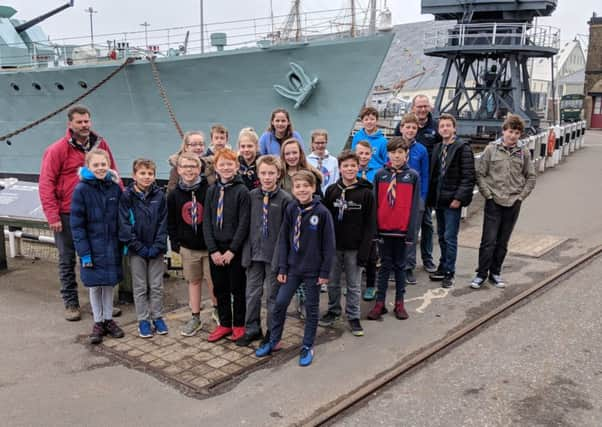Scouts' night-stay on warship


The warship in question was the wartime C-class destroyer HMS Cavalier.
Laid down at Cowes on the Isle of Wight in March 1943, Cavalier was launched in April the following year.
Advertisement
Hide AdAdvertisement
Hide AdAfter service on the Russian convoys, Cavalier was despatched to the Far East to take part in the war against Japan.
She remained in service throughout the Cold War, finally being retired and decommissioned in 1972.
Preserved as a museum ship and being the only surviving Second World War British destroyer in the UK, Cavalier now resides at the Historic Dockyard Chatham.
Having spent the day exploring the various exhibits in the dockyard, which includes the RNLI’s Historic Lifeboat Collection, the Victorian era sloop HMS Gannet, and the submarine HMS Ocelot (which the group toured), the Scouts were given the opportunity to manufacture their own length of rope in the Ropery, a remarkable ¼ mile-long structure which, when constructed, was the longest brick-built building in Europe.
Advertisement
Hide AdAdvertisement
Hide AdHaving boarded HMS Cavalier, the scouts were allocated their mess decks aft for their night afloat – in the very accommodation that many of the destroyer’s crew would have used.
The night’s stay included a tour of the veteran warship given by an officer on the Royal Navy Reserve.
To be able to ‘serve’ on Cavalier for the night, a basic introduction to naval life afloat was provided – which started with a lesson in drill up on deck.
Each Scout also sampled the joys of the traditional hammock, as well as discovered the various departments and parts of a Second World War warship.